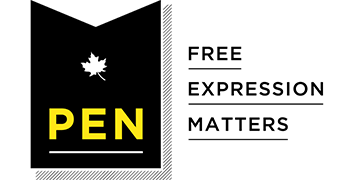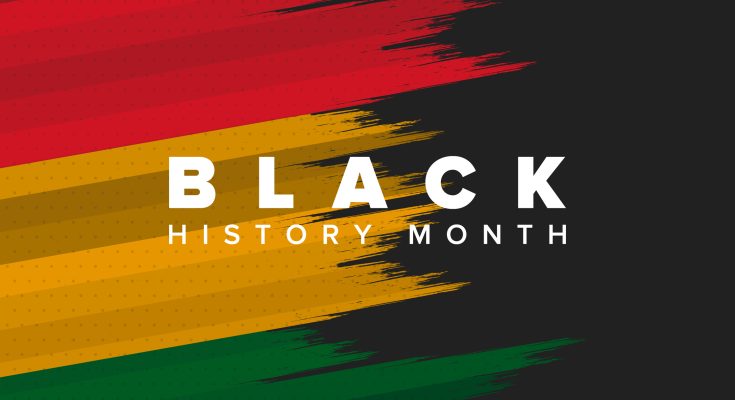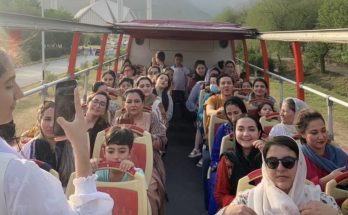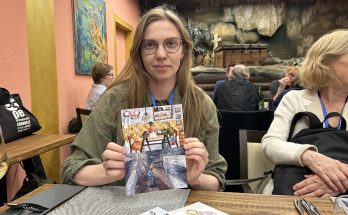Toward a Practice of Collectivity
By El Jones
The following essay appears in Abolitionist Intimacies, and is reprinted with the permission of Fernwood Publishing.
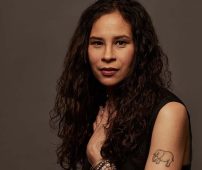 It is the summer of 2020, at the height of the protests against police brutality sparked by the killing of George Floyd in Minneapolis but sustained in Canada in reaction to the killings by police of many Black and Indigenous people. Coleman Howe, an elder and survivor of Africville, is driving me around the true borders of his community. Africville, a community on the shores of the Bedford Basin in Halifax, founded by Black refugees of the War of 1812, was destroyed by the city of Halifax in the 1960s. Labelling the community a slum, the city sent bulldozers to crush the homes, raze the church, and dislocate the residents into public housing. Prior to the destruction and displacement of the community, the city denied municipal services like water and sewage while siting a dump within its borders, a practice of locating hazards within Indigenous and Black communities that scholars identify as environmental racism. Ted Rutland identifies the entanglement of power, space, and race brought to bear upon Africville and its residents through the sophisticated violence of “planning.” Urban planning represents itself as modern and expert, rendering Black bodies marginal and disposable and normatively constructing ideas of the human by determining who can be exited from public space.
It is the summer of 2020, at the height of the protests against police brutality sparked by the killing of George Floyd in Minneapolis but sustained in Canada in reaction to the killings by police of many Black and Indigenous people. Coleman Howe, an elder and survivor of Africville, is driving me around the true borders of his community. Africville, a community on the shores of the Bedford Basin in Halifax, founded by Black refugees of the War of 1812, was destroyed by the city of Halifax in the 1960s. Labelling the community a slum, the city sent bulldozers to crush the homes, raze the church, and dislocate the residents into public housing. Prior to the destruction and displacement of the community, the city denied municipal services like water and sewage while siting a dump within its borders, a practice of locating hazards within Indigenous and Black communities that scholars identify as environmental racism. Ted Rutland identifies the entanglement of power, space, and race brought to bear upon Africville and its residents through the sophisticated violence of “planning.” Urban planning represents itself as modern and expert, rendering Black bodies marginal and disposable and normatively constructing ideas of the human by determining who can be exited from public space.
Urban planning represents itself as modern and expert, rendering Black bodies marginal and disposable and normatively constructing ideas of the human by determining who can be exited from public space.
Even as narratives of Africville take hold, driven by the activism and voices of former Africville residents and taken up increasingly in scholarly and artistic work, the meaning of Africville and its histories and realities are rendered unstable. Reduced to a circumscribed space (until 2016, an off-leash dog park) in the current visual field, Africville reads as a small space in the vicinity of a reconstructed church. Scattering the community has also decimated its histories and stories, often held only in the memories of the elders who lived there. This is why Coleman Howe is driving me around the much broader borders of the original community, a physical and experiential geographic practice of reasserting, reclaiming, and remembering. Coleman is putting our bodies on the land, tracing the boundaries as a form of pushing back not only against the past erasure of the physical buildings but against the ongoing erosion of Black presence and the weight of state control continuing to be exerted upon its descendants in the criminal justice, child welfare. and education systems and in the ongoing impact of these systems on community health and wholeness.
Coleman reminded me of the African principle of sankofa: to go forward, we must turn backward to the past. As calls for racial justice and actions against state violence intensified in the city, his return to the lost borders of Africville and the somatic teachings he shared with me were not nostalgia; they were political acts demonstrating there can be no justice without reparation and accounting for the past. As he drove me around the streets, pointing out landmarks, we arrived at the former site of Rockhead Prison.
The prison exists through time: in the sites where empty prisons still stand, as in Kingston, Ontario; where they become tourist attractions milking their horrors for entertainment, as at Alcatraz; or whether they are removed completely, as was Rockhead Prison.
Where the prison once stood is now the Leeds Street campus of the Nova Scotia Community College, a generic, shiny, modern building of glass. No trace of the historical building remains. Coleman told me how, due to a crisis of affordable housing in his post-World War II childhood, police vans would drive around the streets in the winter picking up frozen bodies of unhoused people and delivering them to the prison. On this hot summer day, it was hard to imagine even their ghosts haunting the site. How easily these places of containment, suffering, and death vanish. While I wrote some of the poems and essays that appear in this book at the Banff Centre for Arts and Creativity – in a national park constructed through prison labour – I had the same experience of finding myself unknowingly undergirded by carceral foundations. “The Prison Is Always with Us,” I call one of the essays reflecting on how my own geographies of Nova Scotia and New Brunswick are mapped by prison journeys, the places I drive through and to on my way to this region’s various carceral institutions. So too, the prison exists through time: in the sites where empty prisons still stand, as in Kingston, Ontario; where they become tourist attractions milking their horrors for entertainment, as at Alcatraz; or whether they are removed completely, as was Rockhead Prison.
New sites of violence arise to replace, modify, or simply reclassify the old: Indigenous containment shifted from the residential school to the youth detention centre … the street check eliminated as the police invest in surveillance technologies, child apprehension rebranded as “care.”
In an essay read to me over the phone as I waited for my laundry in the basement of the Banff residence, my friend Jerry described Christmas inside prison: “feeling that you are alone and forgotten, a failure to everyone – including yourself – and that your family was enjoying the festivities as though you don’t exist. Men go to their cells and close the door to block out the noise and the reminder of what life is at that very moment.” Those living inside prison walls describe being buried alive; how do we even begin to memorialize the dead and lost? This is the final violence of the punishment inflicted by carceral systems: we so quickly disappear them from our memory that at the sites where so much horror has taken place, there is often not even a marker. Not a mark. Those displaced from the community to the prison are displaced again in time, removed again, forgotten again, silenced again, erased again. In turn, new sites of violence arise to replace, modify, or simply reclassify the old: Indigenous containment shifted from the residential school to the youth detention centre and the adult prison system, the segregation unit renamed the Structural Intervention Unit, the street check eliminated as the police invest in surveillance technologies, child apprehension rebranded as “care.” ln the words of poet A.E. Housman: “And yon the gallows used to clank/ Fast by the four cross ways …. / They hang us now in Shrewsbury jail”: death simply modernized and relocated, never ended and always continued in a new form.
To write the prison, and to write into the spaces where state violence occurs more broadly – the shelter, the halfway house, the group home, the child welfare office, the border – is to contend not only with this present violence but also the past and future of that violence. We must remember to remember: both to locate the prison in its histories of colonial and racist violence and also to honour the resistance and refusal of those who have struggled against this violence.
Memorializing the lives of those in prison has both a present and a future urgency … to speak back against the state’s will toward amnesia and its endless reincarnations of white supremacy and violence masquerading as reforms.
In “Plantation Futures” geographer Katherine McKittrick details how the plantation reoccurs in the post-slavery context. McKittrick writes, “In agriculture, banking, and mining, in trade and tourism, and across other colonial and postcolonial spaces – the prison, the city, the resort – a plantation logic characteristic of (but not identical to) slavery emerges in the present both ideologically and materially”. As McKittrick argues, the plantation continues to underlie and organize anti-Blackness, “emerg[ing] in the present to repeat itself anew” in contemporary expressions and practices of anti-Black violence. Black death is always reincarnated. Thus, as Coleman Howe understood when he insisted that I return to the demarcations of Africville, the 2020 protests against police brutality could not be decoupled from an understanding of the destruction of Africville, and in turn, Africville could not be properly understood without recognizing that spatial proximity of the community to the prison. To enter Africville is to encounter the prison gate both materially and symbolically, as both precursor and future for the dislocation of Black life. Memorializing the lives of those in prison has both a present and a future urgency: to speak of and in and through sites of state violence is to speak back against the state’s will toward amnesia and its endless reincarnations of white supremacy and violence masquerading as reforms.
Toward the end of his essay, “Raising Raced and Erased Executions in African-Canadian Literature,” George Elliott Clarke summons African Canadian writers to banish the disquieting silence around racially biased incarceration and state-sanctioned murder in Canada. We must examine all texts – novels, poems, and plays, religious, journalistic, and legal materials – to begin to determine the lives of our “martyrs” colonial, modern, and postmodern Canada and to begin to hear their voices speaking back to us.
In the African tradition of call and response, I answer Clarke’s call by adding that these stories dwell beyond the text. To truly engage the realities of Black Life (in Idil Abdillahi and Rinaldo Walcott’s formulation and tide of their 2019 book) and death, we must tum also in our work to the living archive: the Black people who face imprisonment, deportation, brutality, surveillance, and policing in all forms in this place we call Canada.
Clarke urges us to “examine”, but I suggest we “collect”. Michel Foucault in Discipline and Punish identifies the examination as “a normalizing gaze, a surveillance that makes it possible to qualify, to classify and to punish” – an ordering that takes place in the hospital and the school linking the “formation of knowledge” to the “exercise of power”. I am not suggesting that Clarke advocates this kind of hierarchical gaze, but what is perhaps a coincidence of wording allows us to consider how we enter into spaces of trauma as writers. How does the writer also become a detached observer under scholarly notions of “objectivity,” “lack of bias,” or removed expert? Feminist sociologist Dorothy Smith problematizes these abstract, “objective” categories of knowledge removing people from their “everyday” experiences and reflecting dominant perspectives.
In this word “collect” then, I think not only of the sense of a collection – of the archiving of Black experience and our project of recovering what is lost, erased, and buried – but also in the sense of collective action – of collectivity – the shared work not of forensically extracting stories but of telling them together. I also think of the call to “collect our people,” and what it means to take seriously the slogan that “All Black Lives Matter,” and no Black lives matter without the lives of those considered disposable or not respectable.
While the white supremacist imagination constructs the production of space as natural and neutral, in fact these are geographies of domination and colonization that normalize the absenting and erasure of Black people.
Collection also has another, more disturbing set of meanings. Embedded in it is also the image of the police van collecting unhoused bodies from the street, the collection of samples from those under medicalized state surveillance (drug testing on parole, for example), the centralizing of Indigenous people onto reservations, the RCMP collecting children to be condemned to the residential school. Collection in this meaning reminds us of the ever-presence of state violence. In Demonic Grounds (2006), Katherine McKittrick argues that traditional geographies uphold “the profitable erasure and objectification of subaltern subjectivities, stories, and lands”. While the white supremacist imagination constructs the production of space as natural and neutral, in fact, these are geographies of domination and colonization that normalize the absenting and erasure of Black people. As she tells us, “we make concealment happen”. The idea of collection, in this sense also tied to notions of cleansing and hiding – the removal of those who are unsightly, disordered, disabled, or ungovernable – reminds us of emptying space of the bodies deemed imprisonable, deportable, or bound for institutionalization. Canada as a settler colonial state. is inherently part of this, as containment, removal, and collection processes are tied to Canada’s historic and ongoing genocide of Indigenous people.
El Jones is a director of PEN Canada, spoken word poet, an educator, journalist, and a community activist living in African Nova Scotia. She was the fifth Poet Laureate of Halifax. In 2016, El was a recipient of the Burnley “Rocky” Jones human rights award for her community work and work in prison justice. She is a co-founder of the Black Power Hour, a live radio show with incarcerated people on CKDU that creates space for people inside to share their creative work and discuss contemporary social and political issues, and along with this work, she supports women in Nova Institution in writing and sharing their voices. El served as the 15th Nancy’s Chair of Women’s Studies at Mount Saint Vincent University for the 2017-2019 term. Her book of spoken word poetry, Live from the Afrikan Resistance! was published by Roseway Press in 2014. El writes a weekly column for the Halifax Examiner, and was an Atlantic Journalism Award winner in 2018. El would like to pay tribute to the many nameless and unrecognized women whose work makes it possible for her to be here today. She is currently Writer in Residence at the University of Toronto, Scarborough Campus. She lives in Halifax.
Featured image credit: Vitalii Abakumov
